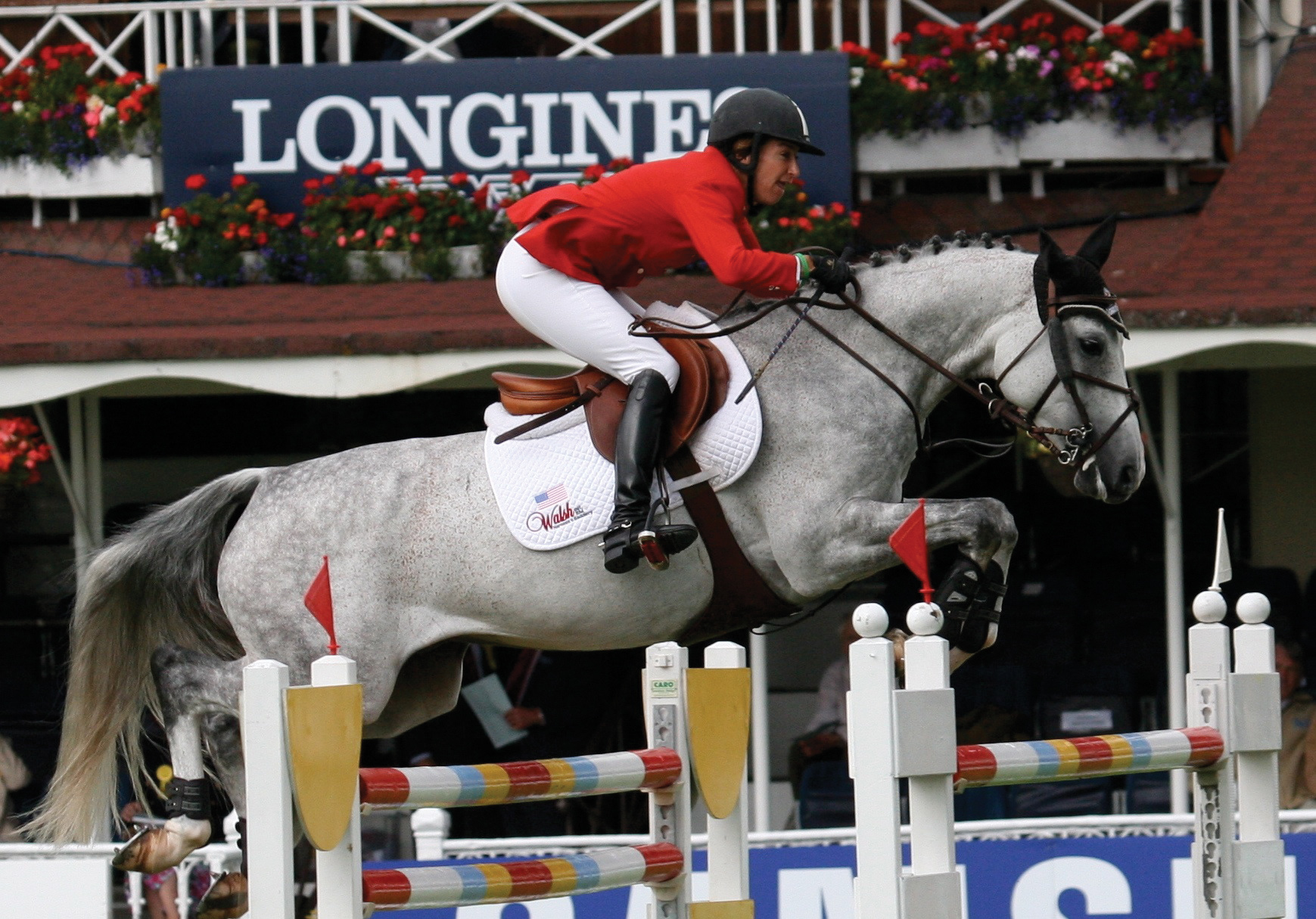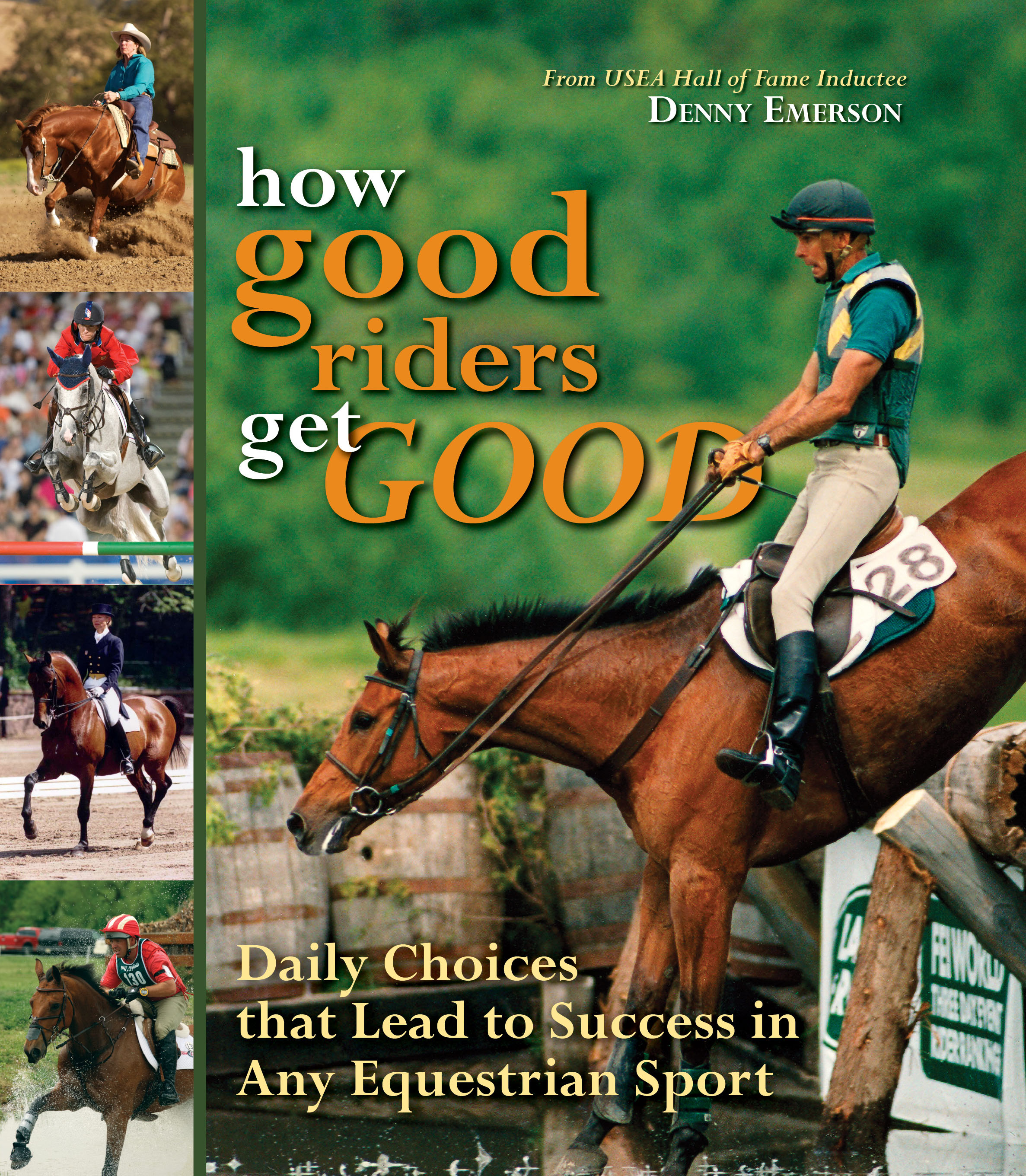This excerpt from How Good Riders Get Good by Denny Emerson is reprinted with permission from Trafalgar Square Books (www.horseandriderbooks.com). Emerson’s new book Know Better to Do Better will be available in November 2018.
In this excerpt from How Good Riders Get Good by renowned rider and coach Denny Emerson, he challenges us to learn to become independent riders and educated horsemen.
I’ve been teaching riding for a very long time. I’ve asked literally thousands of young riders (and plenty of not-so-young ones, too), ”What are your goals?” Many of them have replied, “To win an Olympic gold medal.” That’s a nice, straightforward answer, don’t you think? And since the odds of winning one are about one in a million, you would think, would you not, that those young “eager beavers” would assiduously study the task at hand?
Call me a cynic, a pessimist, a grouch, a curmudgeon, or whatever you want, but I can tell you that about one in three hundred of them have the vaguest clue about the sport that they desire to conquer.

Photo by Ashley Yanke
Take the simple fact that jump course designers don’t scatter jumps at random, but have very specific goals in mind, based upon the fact that the average horse’s canter stride is about twelve feet long. Course designers know that a cantering horse will take off approximately six feet in front of a three-foot, six-inch jump, and he will land approximately six feet beyond the jump. Thus, course designers usually work from the premise that the “normal” distance in a one-stride in-and-out is twenty-four feet (six feet for landing, twelve feet for the stride, six feet for the takeoff). For a two-stride combination it’s thirty-six feet; for a three-stride combination it’s forty-eight feet, and so on. Everybody who aspires to know anything about jumping needs to know these mathematical facts.
In addition to knowing the basic math about distances, it’s also important to have the “tools” to figure out what the actual distance is between any two fences—at a show or in a training arena. The obvious and best answer would be to measure these distances with a tape measure or a measuring wheel, but no one uses those devices at competitions. This means we have to be able to pace the distances, by standing with our backs against one jump and counting how many of our three-foot strides we take to arrive at the following jump. If we take eight three-foot strides, we know the jumps are three times eight—or twenty-four—feet apart, a perfect one-stride distance for the average horse.
However, just as many jumper riders fail to know the basic math, so many of them lack an accurate three-foot stride. This is easily remedied by practice. Put a piece of duct tape on the floor of your barn aisle every twelve feet, or put pegs in the ground twelve feet apart (measured precisely with a tape measure) and walk it and walk it until your stride is three feet. But you have to actually practice this, and most riders just don’t do it.
Which brings to point another good way to get that “edge” in a jumping sport: Do and learn what others are too lazy or disinterested to achieve!
Just as most high school graduates don’t go to Harvard, so most riders don’t learn a fraction of what they need to learn if they are to become expert in some area of riding. And I wonder if we teachers are partly to blame for not doing more to inspire them. I have to admit I don’t stockpile “textbooks” to hand out, books like Jim Wofford’s Gymnastics: Systematic Training of Jumping Horses, Frank Chapot’s Winning, Bill Steinkraus’ Reflections on Riding and Jumping, or any book by George Morris—the books that I keep referring to myself. Perhaps I need to create a kind of lending library for my students, and augment my lessons with written or oral quizzes and tests.
Each horse sport’s vast body of knowledge is (these days) often on well-presented DVDs, as well as books. Some “left brain,” or auditory, learners do very well by reading. Others do better watching DVDs. Others ingest the information better if it is filtered through an instructor, mentor, or friend, and imparted verbally. But it really becomes the choice of the individual learner to pick the learning style that works, and then go and learn it!
As I tell my riders, “Go to any competition, and watch the groups from the various stables walking the lines between the jumps.” There, instructors are followed by a swarm of students (their “ducklings”). “There are three slightly short strides between fences 5 and 6,” intones each instructor. “Three short strides,” parrot the ducklings. I ask my students, “Do you want to remain dependent all your life, only competent to do this when there’s someone to tell you how, or do you want to be able to think for yourself?”

Pick up your copy of How Good Riders Get Good from Trafalgar Square Books HERE!
